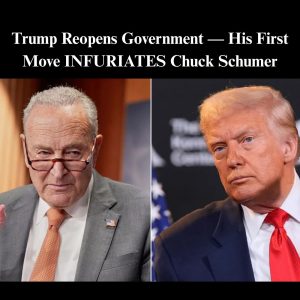**Supreme Court Hands Down Major Ruling: Limits Nationwide Injunctions and Signals Shift in Judicial Power**
### 🧭 What Happened
On June 27, 2025, the Supreme Court of the United States issued a key decision significantly curbing lower federal courts’ ability to grant **nationwide injunctions** — court orders that block government policies across the entire country.
At the same time, the Court granted the Donald J. Trump administration a major win by upholding its ability to enforce a controversial executive order limiting **birthright citizenship**, though the scope of the citizenship policy remains **unresolved**.
### 📌 Why This Matters
* **Judicial power shift:** By restricting nationwide injunctions, the high court is placing more power in the hands of the executive branch and limiting sweeping judicial blocks of federal policy.
* **Birthright citizenship landscape:** While the Court did *not* explicitly overturn automatic citizenship for U.S.-born children of non-citizens, the ruling opens a pathway for enforcement of new restrictions.
* **Policy treatment:** The ruling signals that lower courts must refrain from issuing broad, country-wide blocks of federal actions — which had become common in previous years. This changes how litigation will affect future regulatory or executive actions.
### 🧩 Key Ruling Highlights
* The justices held that individual federal judges lack authority to impose injunctions that extend their ruling nationwide — applying only to parties before the court.
* The Court did *not* decide in full whether the executive order restricting birthright citizenship is constitutional — leaving that question for further litigation.
* Conservatives on the Court celebrated the decision as restoring the balance of power between courts and the political branches; liberal justices warned it threatens the ability of courts to protect rights against overreach.
### 🧑🎤 Reactions & Implications
* The Trump administration lauded the decision as a “monumental victory” for its policy agenda.
* Civil-rights groups expressed concern: by limiting nationwide blocks, future federal policies could be enforced in parts of the country even while litigation continues, potentially creating unequal protections.
* Legal analysts say this will accelerate policy rollout for the administration — since certainties of broad injunctions are weakened. At the same time, states may respond with more fragmented legal challenges.
### 🔭 What’s Next
* **Further court battles**: The constitutional question on birthright citizenship remains open. Lower courts will continue to handle lawsuits under the new injunction regime.
* **Policy acceleration**: With narrower judicial restraints, the federal executive may implement more aggressive actions with the expectation of limited nationwide blocks.
* **State-by-state impacts**: The decision may lead to inconsistencies across jurisdictions, with some states enforcing policies earlier and others contesting them locally.
—
### ✅ In Summary
The Supreme Court’s ruling represents a **fundamental shift** in how federal courts can limit executive actions — reducing the power of nationwide injunctions and thereby increasing the influence of the executive branch. While the immediate spotlight is on birthright citizenship, the broader implications affect nearly every area of federal policy and litigation strategy.
Whether this change strengthens governance or weakens judicial oversight remains a subject of intense debate — but what is clear is that this decision will shape the balance of power in Washington for years to come.





